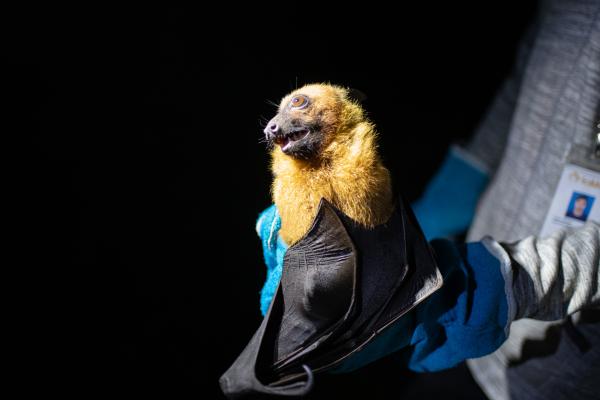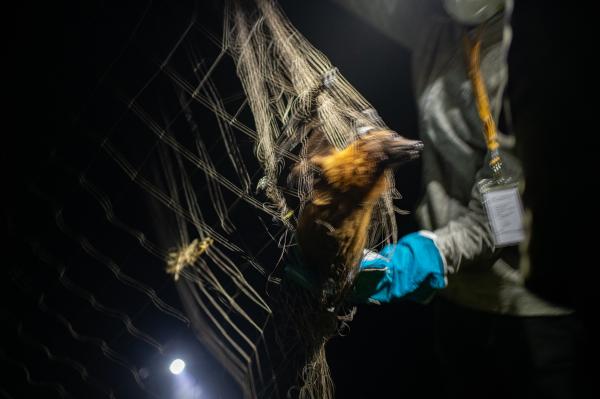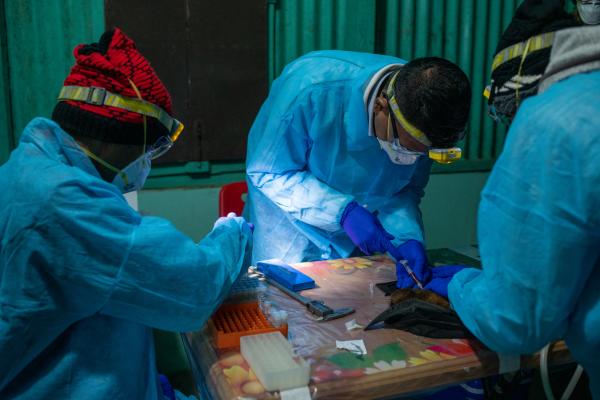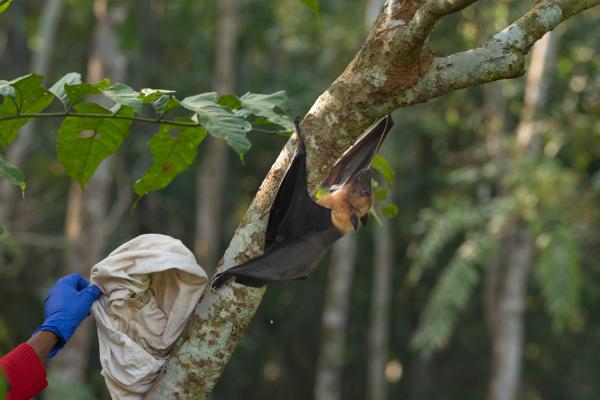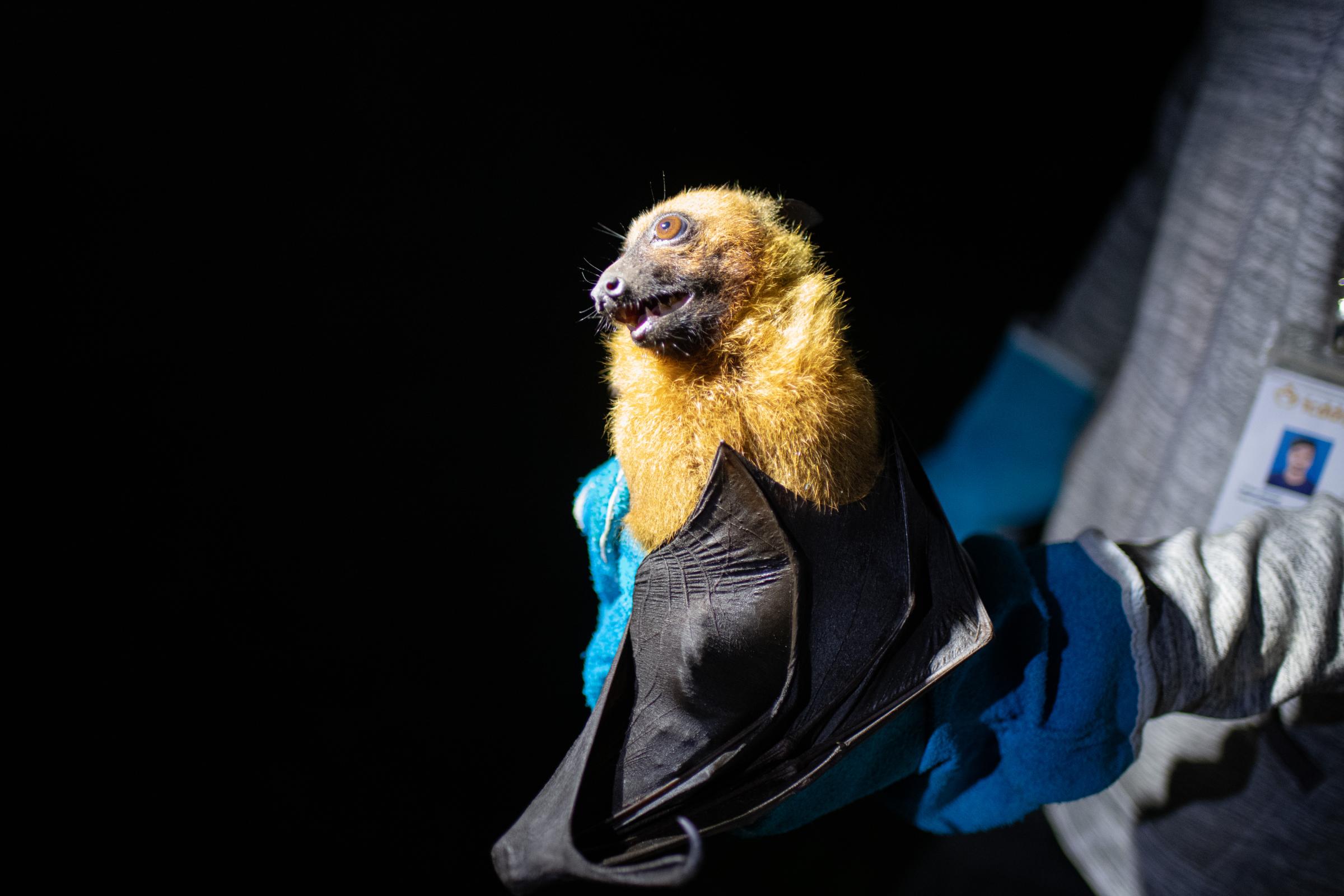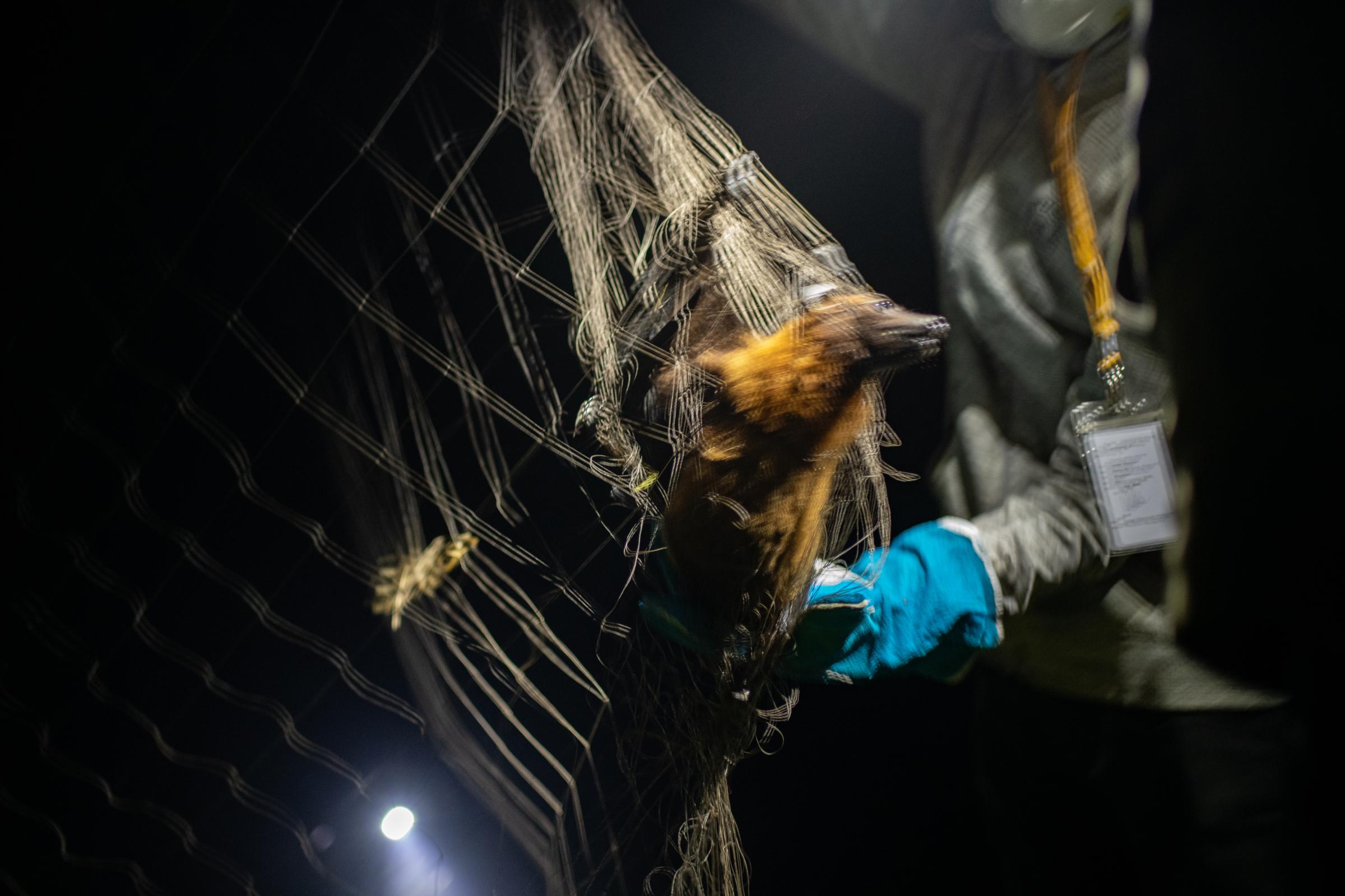For NPR: The Nipah virus has a kill rate of 70%. Bats carry it. But how does it jump to humans?

Fatima Tuj Johora
Visual Journalist
based in Bangladesh
A field researcher is seen holding a bat that was trapped up in the net and will be tested and examined.
Fruit bats are the natural hosts of the NIPA virus, so field researchers place nets to catch them for testing and research in a village of Faridpur, Bangladesh. A researcher inspects the net with a torch to see if any bats have been caught.
A bat hooked on the net, and field researchers tried to remove it carefully from the net.
Fruit bats are the natural hosts of the NIPA virus, so field researchers are preparing nets to catch them for testing and research in Faridpur, Bangladesh.
After setting the nets, field researchers and the volunteers waits for bats to hook up at dawn in Faridpur, Bangladesh.
Researchers collect samples from bat and analyze them in a laboratory in Faridpur, Bangladesh.
A researcher releases a bat after taking samples and inserting microchips into it in Faridpur, Bangladesh.

